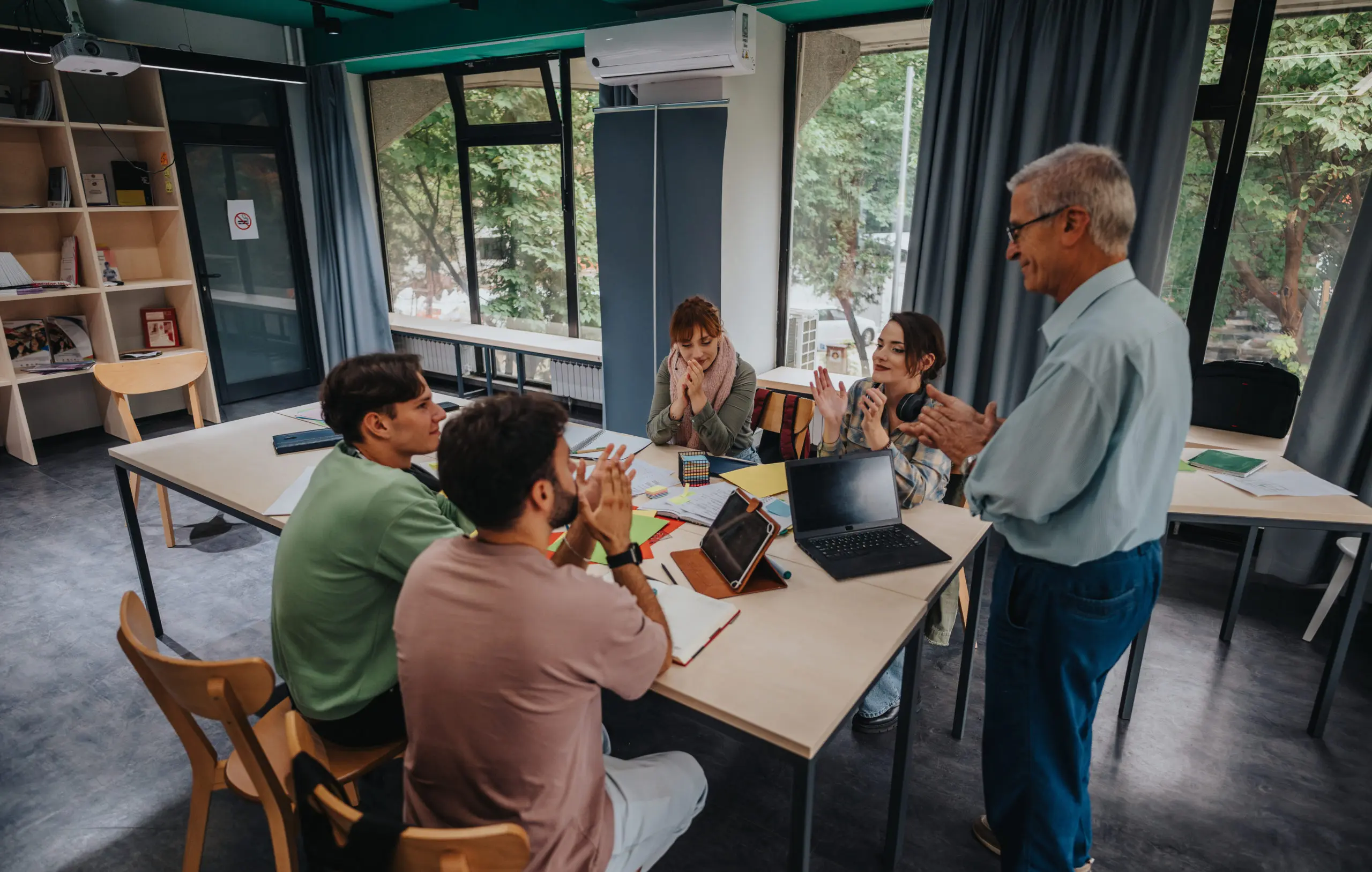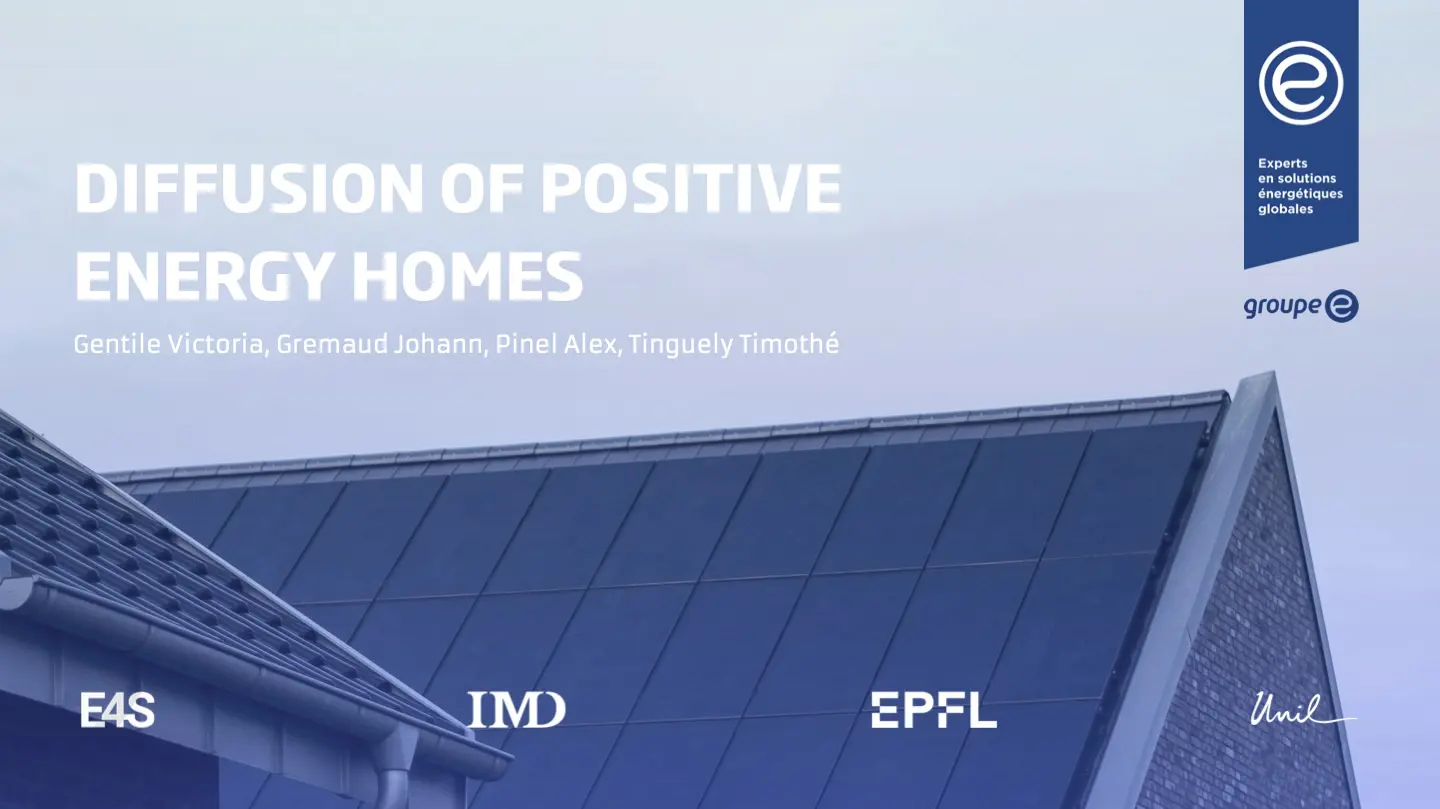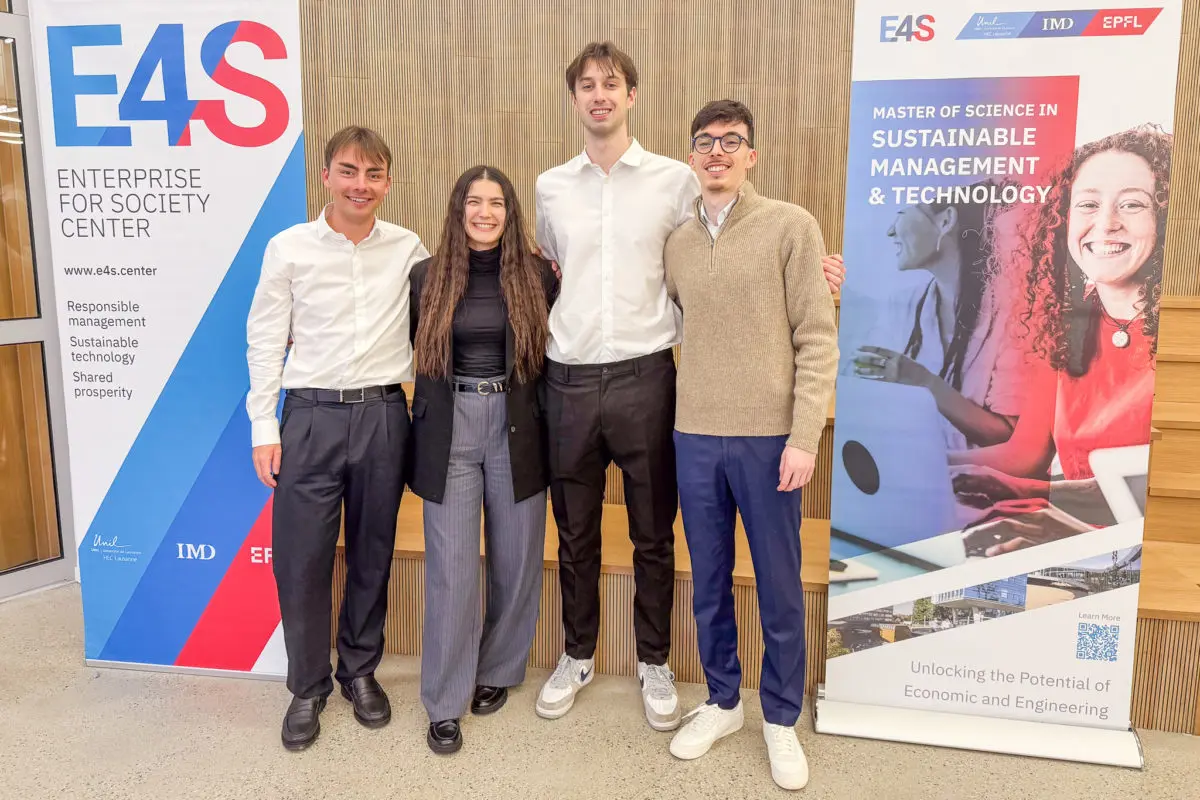
Groupe E: Diffusion of Positive Energy Homes
As part of their Master's degree in Sustainable Management and Technology, students work on a sustainability challenge provided by a company to propose new perspectives or solutions that can have the potential to transform an industry or societal practice.

Envision a future where homes do more than provide shelter; they drive Switzerland’s energy transition. Positive Energy Homes are at the heart of this vision, designed to produce more energy than they consume. Despite their potential to enhance energy independence, lower emissions, and save costs, PEH adoption remains slow. This project explores how Groupe E can accelerate the shift towards sustainable and energy-efficient housing in Switzerland. Using a design thinking approach, key barriers and opportunities are identified through a detailed analysis of market dynamics, customer behavior, and a wide range of stakeholder perspectives.
Groupe E – Accelerating the Diffusion of Positive Energy Homes
What if homes could be more than shelters and become a key driver in Switzerland’s energy transition? With residential buildings accounting for 40% of Switzerland’s energy use and 30% of CO2 emissions, transforming housing is essential to achieving the country’s Energy Strategy 2050 goals. Positive Energy Homes (PEHs) represent a bold vision: homes that generate more energy than they consume, offering energy independence, reduced emissions, and long-term savings. Yet, despite their alignment with societal goals and customer aspirations, the adoption of PEHs in Switzerland remains limited.
Guided by a design thinking approach, this transformative project investigates the root causes behind this stagnation through an analysis of market dynamics, customer behavior, and stakeholder perspectives. Consolidating insights from literature and 23 interviews, key patterns were uncovered.
To address these challenges, 25 potential solutions were developed and systematically evaluated through a multi-criteria decision matrix, integrating input from Groupe E and customer feedback. This prioritization process reveals actionable solutions that balance high impact with strategic alignment:
- Increased visibility: This strategy focuses on making PEHs more recognizable and appealing.
- Centralized information tool: This tool focuses on simplifying the adoption process by providing homeowners with easy access to essential information in one place.
- Architect of the energy transition: Reinforce coordination of stakeholders and guidance of homeowners through the complexities of adopting multiple sustainable energy solutions.
This report offers actionable insights and strategic recommendations on these solutions, empowering homeowners to embrace sustainable energy solutions while advancing Groupe E’s leadership in the energy sector. The design-thinking approach employed in this project also offers a practical and adaptable template for addressing adoption barriers more broadly, especially for disruptive technologies. In particular, it contributes to the discourse on how user-centric strategies can drive innovation and accelerate important transitions. Future work could build on this foundation by conducting quantitative research to validate the identified root causes with a more representative sample of stakeholders and implementing pilot projects to test and refine the proposed solutions.
Students: Alex Pinel, Johann Gremaud, Timothé Tinguely, Victoria Gentile
Company’s supervisors: Florian Buchter, William Grossrieder from Groupe E
Academic supervisor: Alexandre Pauli
Transformative Projects’ lead: Samuel Wicki
